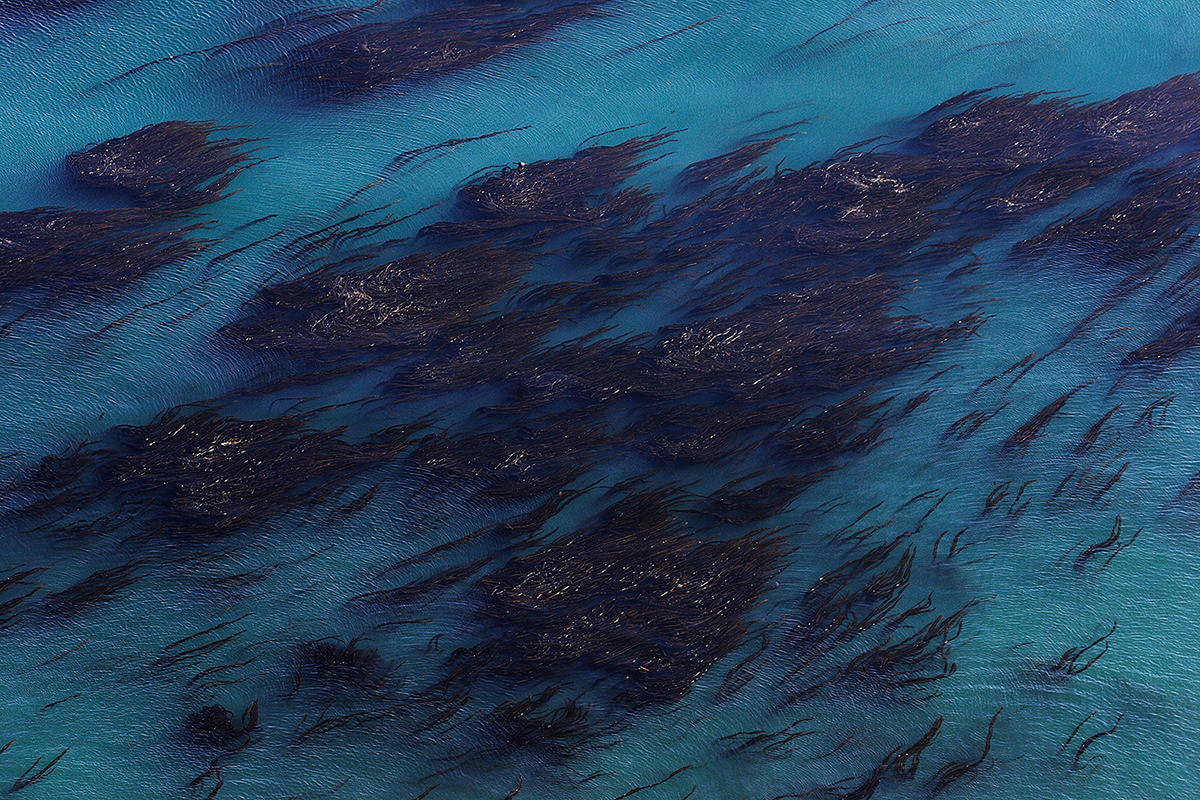In the protected area of the Commander Islands Nature and Biosphere Reserve, studies of brown algae have begun. The data collected will allow us to estimate the area of fields of sea kale, which play an important role in the ecology of sea otter, a species listed in the Red Book, and even calculate the potential abundance of Steller’s sea cow that was killed more than 250 years ago.
Algae are of great importance in the ecosystem of the seas and oceans and create a unique habitat for many marine organisms. On the Commander Islands, about 180 species of macrophyte algae were recorded, of which thirty species are represented by brown algae - among them 3 species of alaria and 5 species of kelp.
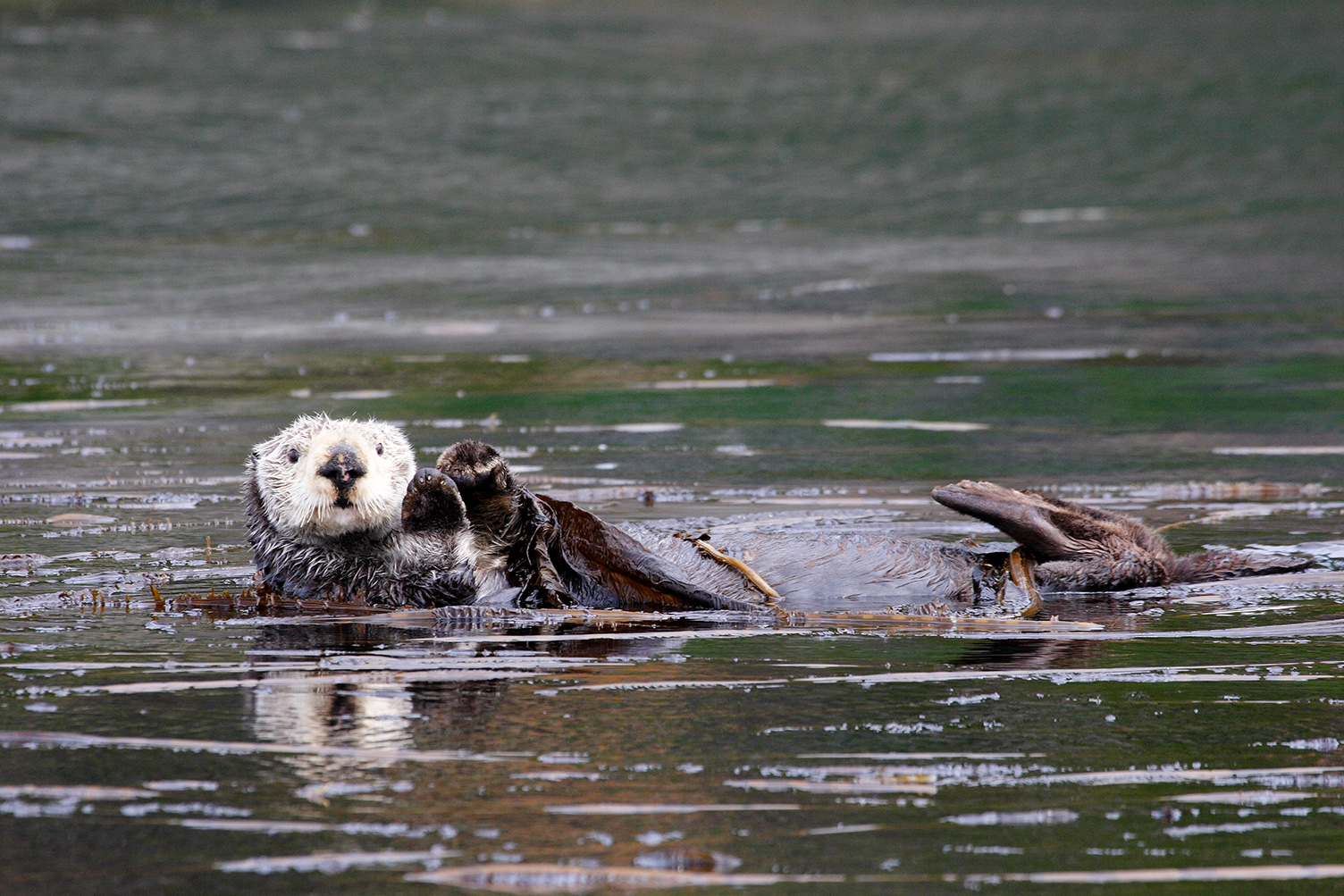
Algae play an important role in the ecology of sea otters. Photos - Evgeny Mamaev
Like other living organisms, algae are subject to outbreaks and decreases in the numbers in the “populations”, and even to a local change in the species composition. For example, experts have no consensus on whether the giant algae, macrocystis, which is common in the Eastern Aleutian Islands, lived in the waters of the Commander Islands. 19th-century scholars often described this “Aleutian rattle” off the coast of the Commander Islands, while current data only record algae thrown ashore. The spatial distribution and area of alaria fields, as well as kelp reserves, are subject to interannual changes and depend on the season of the year. In winter, along with storms, the upper parts of algae are damaged, and the plantations of “sea kale” disappear from sight. At the same time, the underwater part of the algae — rhizoids with a petiole and part of the plate — persists and grows actively with the advent of spring, when brown fields “bloom” again on the surface of the water. This life cycle for algae can last from 2-3 years to 15 years, depending on the species.
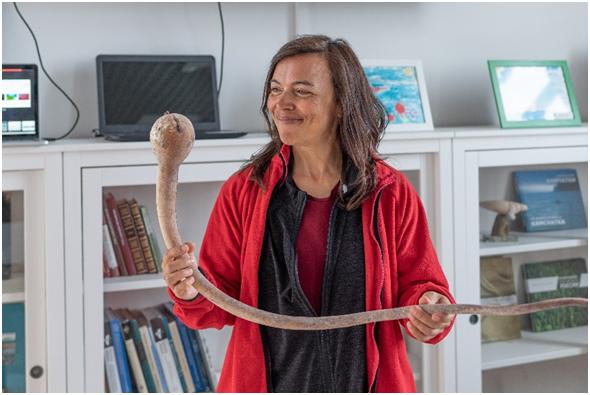
Macrocystis, or the “Aleutian rattle,” is often thrown out on the coast of the Commander Islands. Photos - press service of the reserve
Among these fields, the Steller’s sea cow once grazed — the endemic of the Commander Islands (at the time of discovery, it lived only here), exterminated by humans only 27 years after the discovery of the species. The cows ate mainly kelp and, for their love of seaweed, the hunters called the animal “sea cabbage butterfly”. In winter, when the food supply decreased significantly, sea cows lost a lot of weight. With the beginning of spring, when the plantations of brown algae grew, the Steller's cow again gained fat mass. The animal, according to the descriptions of George Steller, did not dive, but fed, lowering its head under water. Therefore, only floating plates of alaria and kelp in shallow water were accessible to the sea cow.
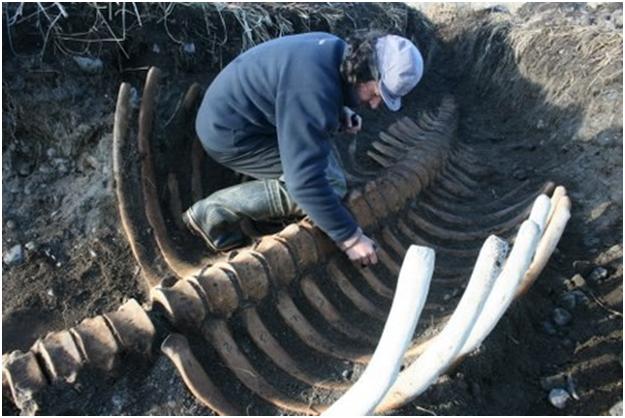
On Bering Island the remains of a Steller’s cow are still found. In 2017, an almost entire skeleton was discovered by Marina Shitova, employee of the nature reserve. Photos - press service of the reserve
Studies of the spatial distribution and area of alaria fields on the Commander Islands are being conducted for the first time. “We planned to carry out this work for a long time, in the framework of studying the ecology of sea otters, but this year we received an interesting request from a young Canadian researcher who writes a dissertation paper on ecology of Steller’s sea cow. Since it lived only on the Commanders, then, of course, it is possible to collect any material only here. And another non-trivial task was added to the research of “sea kale”,” said Evgeny Mamaev, Deputy Director for Science.
In order to study the ecology of a sea cow, one of the tasks is to determine the potential productivity of the Commander’s water area - the assessment of brown algae reserves. The sea cow belonged to the order of sirens, to which their immediate living relatives - dugongs belong. Science knows the energy needs of related species, and based on the mathematical modeling of these data, it is possible to calculate how much “sea kale” one Steller cow needed per day. By assessing the biomass of algae, researchers will be able to calculate the potential abundance of a sea cow before its extinction and evaluate a number of ecological features of the species.
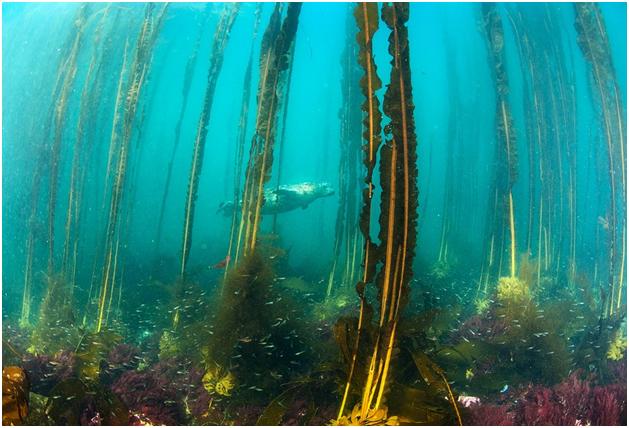
Thickets of sea kale - a unique habitat for many marine organisms. Photos - Andrey Sidorov
The work is carried out in several stages. In the spring of this year, the landscape historian of the reserve Irina Chilchigesheva compiled a preliminary field distribution scheme based on GPS data obtained from marine patrols of the water area. Currently, the boundaries of the spatial distribution of alaria are being refined with a detailed description. Already collected data on Bering Island, Toporkov Island and Ary Kamen. The final stage will be scientific work on the island of Medny and the creation of a distribution map and area of fields.
Steller's, or sea cow - a mammal of sirens order. According to archaeological finds, the animal’s historical range included, among other things, the coast of the Aleutian Islands and California, however, by the 18th century its range was reduced to the waters of the Commander Islands. The animal reached 7 to 10 meters in length and weighed up to 4 tons, exceeding the size of all other marine mammals except cetaceans. A sea cow led a sedentary lifestyle, kept mostly near the coast, where it ate brown algae, and, presumably, could not dive. People quickly appreciated the taste of the animal meat, which was extremely easy to obtain.
Today, the islands and the 30-mile water area around are part of the Commander Islands Nature Reserve, where the possibility of any industrial fishing is excluded. But the coast of the Commander Islands still retains the memory of the “sea cabbage butterfly” - periodically, scientists and local residents find the bones of the exterminated animal .
The author of the title photo Evgeny Mamaev









